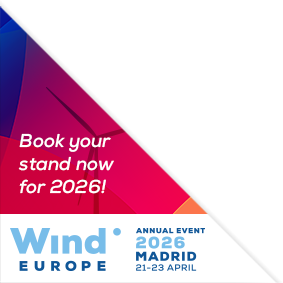Posters
Siblings:
ProceedingsProgrammeSpeakersPostersContent PartnersPowering the Future stageMarkets TheatreStudent programmeResearch & Innovation in actionProgramme Committee & abstracts reviewersPresenters’ dashboardCome meet the poster presenters to ask them questions and discuss their work
We would like to invite you to come and see the posters at our upcoming conference. The posters will showcase a diverse range of research topics, and will give delegates an opportunity to engage with the authors and learn more about their work. Whether you are a seasoned researcher or simply curious about the latest developments in your field, we believe that the posters will offer something of interest to everyone. So please join us at the conference and take advantage of this opportunity to learn and engage with your peers in industry and the academic community.
On 9 April at 17:15, we’ll also hold the main poster session and distinguish the 7 best posters of this year’s edition with our traditional Poster Awards Ceremony. Join us at the poster area to cheer and meet the laureates, and enjoy some drinks with all poster presenters!
We look forward to seeing you there!

PO046: Towards zero embedded carbon emissions for wind parks - a roadmap for copper
Olivier Tissot, Market Development Manager, International Copper Association Europe
Abstract
While wind energy is a key pillar of the energy transition, this fact does not preclude the industry from being required to reduce its material-embedded greenhouse gas (GHG) emissions, nor participating in the evolution towards a more circular economy. Wind installations in the EU typically use between 3 and 4 tonnes of copper for every MW of installed capacity. There is potential for reducing the GHG emissions embedded in this copper use. The International Copper Association (ICA) and its members have developed a pathway aiming to bring the carbon footprint of copper production as close as possible to net zero by 2050 ('Copper - The Pathway to Net Zero'). It sets out a pragmatic approach to decarbonising copper production, using existing technologies. The pathway delineates which decarbonisation options can be activated, by when, and with what impact. It also outlines the enabling conditions that should be in place to achieve this. Using recycled material is often seen as a magic bullet to reduce embedded GHG emissions, in addition to being an objective in itself. While it is true that copper is highly recyclable and that production from secondary material has lower GHG emissions, there is an important constraint. Due to the long lifespan of copper products and the historical growth in demand, only limited quantities of recycled copper come onto the market. Even in an ideal world of 100% recuperation rates, recycled material could not supply any more than half the copper required today. The good news, however, is that copper in wind installations is typically in a highly pure state and easy to recuperate, which means that installations currently under construction will become excellent "urban mines" in the future. Moreover, copper's economic value will provide an incentive for end-of-life wind turbines to be dismantled so that materials may be recycled.



